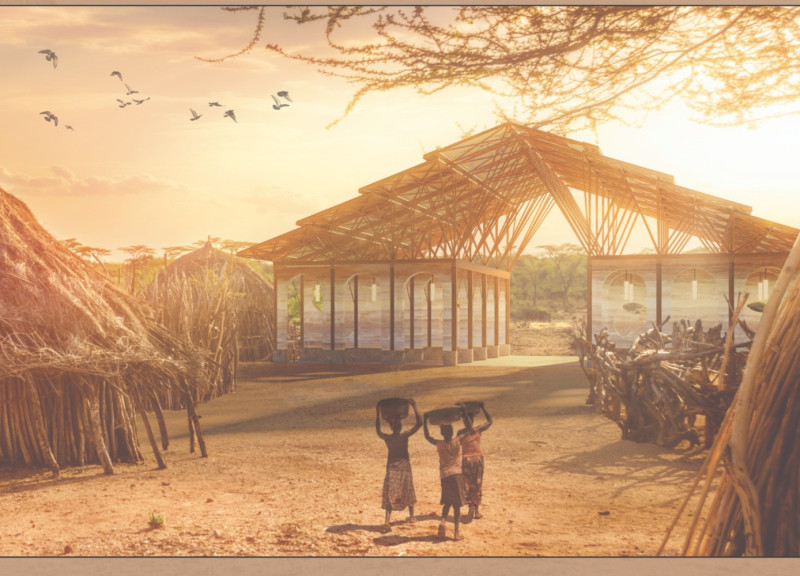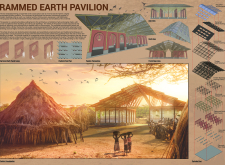5 key facts about this project
The Rammed Earth Pavilion represents a thoughtful exploration of sustainability and community involvement through the use of rammed earth construction. Located in a rural setting, the pavilion serves educational functions while promoting skill development in construction. Its design harmonizes with traditional architecture, linking the past to the present in a meaningful way.
Architectural Form and Structure
The design of the pavilion draws from traditional forms, including exhibition halls and engine sheds, as well as rural farm buildings. This connection to local architectural styles helps it fit into the landscape. Movable rammed earth panels form a key part of the structure and are supported by a timber frame. The weight of the rammed earth contrasts with the lightness of the timber roof, creating an interesting balance that enhances the overall spatial quality.
Materiality and Sustainability
Rammed earth is central to the design, chosen for its low environmental impact and minimal waste. The panels serve not only as structural elements but also contribute to the visual appeal of the pavilion. The roof, lined with reclaimed metal sheeting and equipped with roof lights made from old vehicle windscreens, allows for natural light to fill the interior. This use of local materials further reduces the ecological footprint by minimizing transportation needs.
User Engagement and Adaptability
Designed to be easily demounted and reconfigured, the pavilion supports various community activities and educational programs. Its flexible layout encourages hands-on learning, allowing users to experience and interact with the space in different ways. The movable panels enable multiple configurations, ensuring that the pavilion meets the evolving needs of the community over time.
Spatial Dynamics and Natural Interaction
The design promotes a unique relationship between the building and its users. The qualities of the rammed earth panels shift throughout the day, acting like a natural sundial and enriching the sensory experience. This changing aspect of light and shadow encourages visitors to connect more deeply with the pavilion, inviting a closer look at its materials and their role in the overall architecture.



















































